David McConnell & Lyn Loveless on The Amish & Nature
How do Amish religious beliefs shape their views of nature? What outdoor recreational activities do they favor? What can be learned about their approach to gardening, animal husbandry, and agriculture?
David McConnell and Lyn Loveless are exploring many questions like these in a new book project on the Amish and nature.
Lyn Loveless is a professor of biology at the College of Wooster, and David is professor of anthropology at the same institution, as well as co-author of An Amish Paradox: Diversity and Change in the World’s Largest Amish Community.
I’ve asked David and Lyn to share with us about their project. They also plan to share more posts on this and related topics as they are able. I hope you enjoy learning a little more about this interesting project from David and Lyn.
—
Amish Views of Nature
First of all, we would like to thank Erik for inviting us to be guest bloggers. We have to confess, though, that we are a bit nervous about doing this because we have no experience with blogging. So please bear with us as we try this out.
In our first post, we want tell you how we got interested in our new project, give you a quick overview of some of our thoughts, and then ask for comments and suggestions from you about interesting questions that you think arise from this approach.
The Spark
The idea for a book on Amish views of nature first emerged when I (David) was just beginning work on An Amish Paradox. Through a series of introductions, I had agreed to pick up 5 Amish acquaintances at 4 am near Mt. Hope, OH to go on an all-day birding trip along the Lake Erie shoreline. I’m a moderately serious birder, but as daylight came and we piled out of the van at our first stop, I soon realized I was completely overmatched.
First, my $75 Bushnell binoculars paled in comparison to the approximately $3000 worth of optical equipment, including state-of-the-art Swarovski spotting scopes, that each of my birding companions had brought with them. One of them even had a hand-held GPS to help us map out our birding stops. I remember being mildly shocked at this mobilization of “un-natural” technology in the pursuit of the appreciation of nature.

Second, I immediately realized this was not going to be a leisurely stroll in the park. My Amish companions were extremely skilled at spotting and identifying birds, and they birded at a torrid pace. They were keenly attuned to weather, habitat, songs and calls, behavior, and other environmental cues of bird life. Most kept life lists, year lists, county lists, state lists, and yard lists of all the birds they had seen. By the end of the day, I was both exhausted and exhilarated—but I do remember thinking I had stumbled on an interesting puzzle worth exploring further down the line.
Fast forward ten years. Paradox was finished, and it was time to pick a new project. My co-author Charles Hurst had retired. In the meantime, I had agreed to be the driver for an Amish family (dad, mom and three teenage children) vacationing in the Southwest U.S.
As it turned out, Lyn, a long-time birding friend and botanist, was living in Tucson that summer, and she invited all of us to stay at her house for a week while visiting local points of interest. This was Lyn’s first in-depth interaction with the Amish, and she hit it off fabulously with the family. As we visited Cave Creek Canyon, the Arizona-Sonora Desert Museum and other natural sites of interest, she too became interested in how the Amish viewed and interacted with natural landscapes. A year later the two of us decided to collaborate on this project.
The Project
We all appreciate that the Amish are a rural population, usually living simply within an agricultural landscape. This understanding has generated the widespread image of the Amish as “all-natural,” with a way of life that is local, self-sufficient, and in harmony with the earth. But how do the Amish think about the natural world, and in what ways do they see themselves as part of—or separate from—the non-human landscape and the ecological processes around them? How do they interpret natural events that surround them, and how does their understanding of their relationship with nature guide their choices in how they live on the landscape?
In the broadest terms, we are interested in how Amish situate themselves within nature, as observers of nature, as users of natural resources, as people whose livelihoods come from nature, and perhaps as a part of nature and natural cycles. From this starting point, we can identify many different specific topics that we hope to pursue.
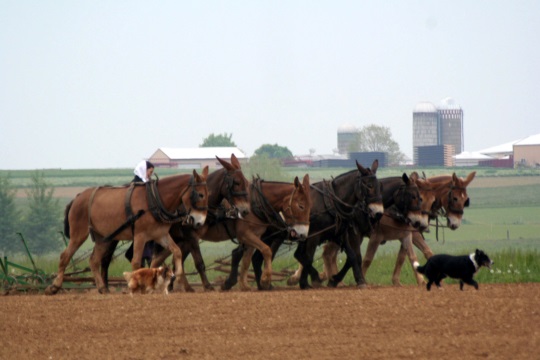
At this point, we are in the early stages of our fieldwork. We’ve done some initial interviews and made observations at a variety of different events in the Holmes County Settlement, such as Family Farm Field Day and the Northeast Ohio Sportsman’s Show. But we are still refining our questions and trying to organize our thinking about the important factors that guide how the Amish relate to their natural environment.
For example, how people think about their ecological surroundings is deeply influenced by religion. Religious beliefs often spell out quite clearly the obligations that we do or do not have to other people or other things. We’ve been thinking a lot about how the Amish interpretation of Christianity, especially their literal reading of the account of Creation in Genesis, shapes their views of nature and of their place in the natural world. How exactly does Genesis serve as a template for interacting with the natural world?
In your observations, do the Amish view themselves as apart from nature? If so, do they see themselves as controlling and dominating nature, or do they see themselves more as stewards and shepherds of God’s creation? Does their “dual kingdom” theology lead the Amish to be relatively unconcerned about what happens on this planet because they are more focused on the next life?
We are excited about this project and look forward to any comments or suggestions readers of this blog may have.


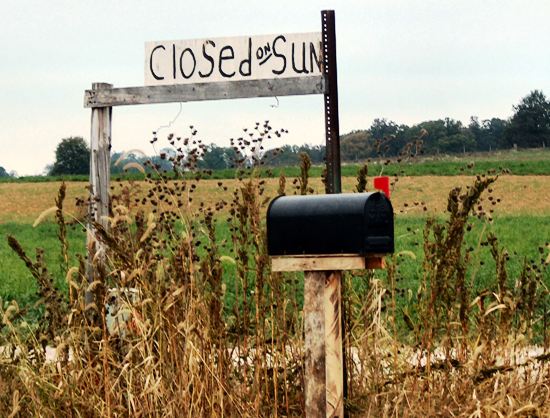

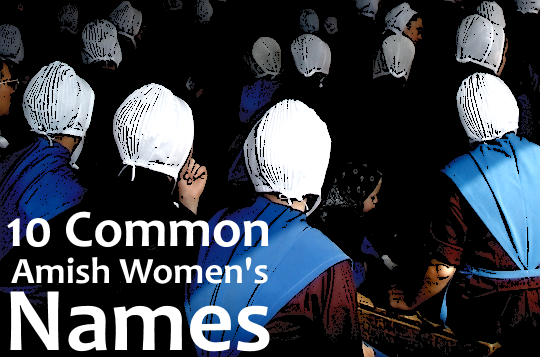

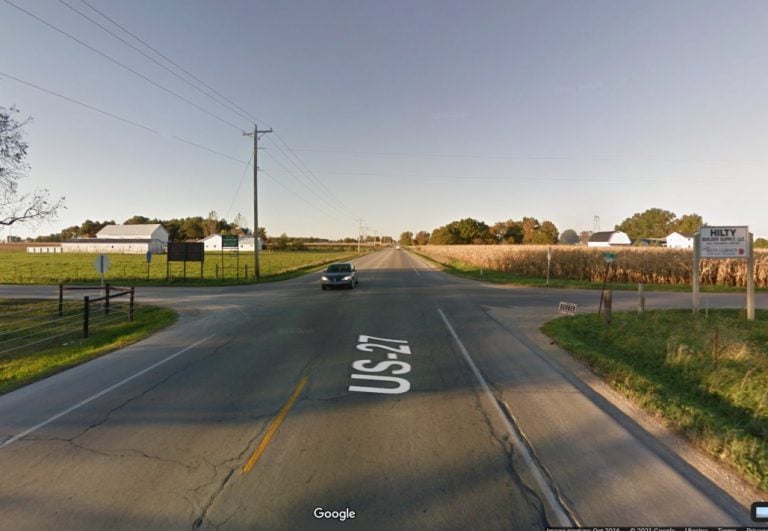

![Community Supports Grieving Amish Family; 6-Year-Old Survivor In Stable Condition [Updated]](https://amishamerica.com/images/amishman-mowing-lawn.jpg)

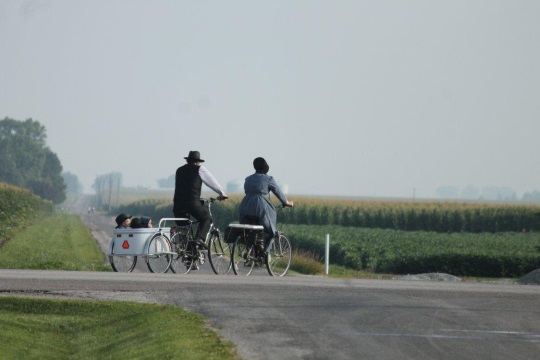
Herpetology and the Amish
I just finished Paradox, borrowed from my sister-in-law who lives near Berlin, a way station on my trips between Kansas and Maine, where I am purchasing land near the new Amish settlements in Thorndike and Unity. I am as avidly involved in amateur herpetology as the Amish are in bird-watching, but my Holmes County brother Dave forewarns me never to wear any of my many Kansas Herpetological Society t-shirts when I am visiting them in Ohio Amish country.
As someone with academic training in cultural geography I am fascinated with the wide variety of beliefs associated with salamanders, turtles, frogs and particularly snakes in various religious, tribal and ethnic groups. I look forward to reading what David and Lyn discover in their research.
Thanks, Mike, for these comments. We’ve come across quite a few interesting snake stories and will likely devote a future post to “reading nature” for signs of God or Satan. May I ask what was behind your brother’s warning not to wear Kansas Herpetological Society t-shirts in Ohio Amish country?
snake images
I think my brother was concerned that the snake images on most of the Kansas Herpetological Society t-shirts would be a potential problem with some of his Amish neighbors and businesses we visit when I stop over in Holmes County. Mainly not being unintentionally offensive.
Were the T-shirts in some way depicting Satan as a serpent or something? (That would strike me odd, given the scientific nature of herpetology)
Otherwise, I can’t fathom why a t-shirt with snakes on it might be upsetting to the Amish or other plain Christians.
snakes
Not sure where the concern arose. I do recall a story told of Amish men killing a den of wintering snakes, but I have not had an opportunity to do any personal inquiries with Amish about their attitudes toward the snakes that populate Holmes County. My friend the late Joe Collins, wrote a pocket guide to the Ohio snakes. That source shows only four of the 25 snakes found in Ohio have verified occurrences in Holmes County. Some species do occur in many nearby counties. I have no personal knowledge that Amish are any more or less likely to kill snakes encountered in wild. Joe, by the way, was a native son of the Buckeye State. He did wonders to change attitudes about herps here in Kansas.
Amish and Nature
I look forward to what promises to be an interesting book. Any good farmer is naturally attuned to the things of nature since weather, bugs, plant and animal life, etc have such a significant impact in their life. Since the Amish believe in a Creator God who controls these factors, I would think they might be even more
aware of nature; realizing that cursing the weather or bugs are not the answer. However, not all Amish are birders like David Cline or your Amish friends. Many observe nature naturally in the course of daily, weekly and monthly activities without investing in equipment or time specifically for that purpose.
Fascinating
This sounds like a fascinating look at a little-explored aspect of Amish life. Like most of us who live in the country, I find the Amish I know to have a realistic approach to such subjects as hunting, which sometimes surprises people who have pre-conceived notions of what it means to be Amish.
Marta Perr
This was thoroughly enjoyable
We do love nature. We will be taking two or three people down to Avery Island in southernmost Louisiana to help with a work weekend cleaning up and thinning out the Bamboo groves planted by E. A. McIlhenny in the early 1900’s on his Tabasco pepper plantation. Thousands of Snowy Egrets will be nesting, as well as Rosy Spoonbills, Great Blue Herons and many others. A great way to combine birding and be good stewards of Nature that God has blessed us with.
Great idea!
This sounds like a really fascinating and fun project! I, for one, will look forward to your posts.
In your research, will you be interviewing or observing those Amish who are not as “well-heeled” and cannot afford to travel afar and invest in equipment for things such as bird-watching? Because I think the families who cannot afford these expeditions are likely going to give a more “traditional” view of a commitment to be connected to the earth. And I think this commitment was more important in my community than whether they saw themselves as “stewards of the earth.” (This way of “framing” the issue comes from the way we think, and is not a typical Amish way of thinking).
I think some Amish tend to be caretakers of the earth, while others have more of a tendency to want to dominate, at least as it comes to the creatures of the earth. This can be seen in the way that people treat their farm animals… some with respect and care, while others are rough in their “care” of them.
Will you be studying the Amish in Holmes County only, or will you study those in say Lancaster County? I think you will get quite a different perspective in these two communities as you explore these questions.
I know that when issues of world population came up when I was still in the community, the prevailing belief was, “God will take care of it.” This was also their belief about their genetic issues. They believed that it was playing God to concern themsleves with what they saw as God’s domain. I don’t know if this was just in the Geauga community or if this is a more generally held belief of the Amish.
I wish you the best with your research. I’m a bird-watcher too, but I’d clearly be outflanked, as you described what you felt. I think this is something new, by the way. I never knew any Amish to invest in such things where I grew up. But I’ve been away for 30 some years.
A lot of our fieldwork will be in Holmes County, simply because it is closest to where we live. But we also plan to visit at least a dozen or so other Amish settlements to try to capture some of the important differences that you mention. Birding, for example, has not caught on in other large Amish settlements to the extent that it has in Holmes County, for a variety of reasons. And we’ve also noticed–like you–that more conservative Amish communities tend to “live” their connection to the earth in ways that are not readily expressed in language. Amish ways of life also intersect with environmental issues that may be local or regional, rather than national. Amish farmers in Lancaster County, for instance, have been quite involved in EPA efforts to clean up the “dead zone” in Chesapeake Bay. So yes, capturing the differences across settlements, affiliations, and regions is important to us–but also a big challenge since we can’t possibly visit 480 Amish settlements. This is one reason why we appreciate the opportunity to share our progress reports and get suggestions from all of you who are such keen observers of Amish life.
What an enjoyable topic, and what excellent questions from David and Lyn. I look forward to more.
We enjoy nature & bird watching, but our “equipment” is pretty cheap & basic and I can’t imagine spending a lot on traveling just for bird-watching, but to each his own… Maybe I spend more on my hobbies than a bird-watcher thinks is reasonable. 🙂
Eagle Cam Pennsylvania
Generally, just being outside a person can see and hear more of nature. You can hear more crickets and birds even inside the house if the windows are open. A woman may observe more birds when hanging laundry on a clothesline, than using an indoor dryer.
One way to observe nature indoors, is online. A live Eagle Cam in Pennsylvania can be seen at
http://lancasteronline.com/eaglecam/
Snakes on the farm
Since the Amish communities in which I was reared were not large by the standards of Ohio or Indiana I have a problem in knowing whether my experience was Amish, per se, or due just to individual families.
For instance, my own family was headed by my dad who grew up on a North Dakota farm and my mother, born in Michigan, who had a Bishop dad who was sent to various Amish communities. Their views were often at variance with each other.
One thing they had in common was an abhorrence (I don’t think the word is too strong) of snakes. Good, bad or neutral, snakes were killed wherever they were found. My mother, at least, felt snakes were a symbol for Satan, straight from the garden of Eden, and both my parents reacted to them as though snakes were evil.
The dragonfly, one of my own favorites, was called a ‘snake doctor’. Mom didn’t like them, either.
We use the name dragonfly now, but I remember being younger and hearing them called “schlange doctore” also. I wonder where that came from? I am very squeamish about snakes but I don’t go after them unless they are in a spot they are a danger or nuisance. (We once had two in our basement!) I might shudder when I see one then go the other way, but I can think of people (Amish & non-Amish) who will kill any snake they come across while I can also think of some who don’t mind them at all, like the older Amish couple who has a lot of black snakes around their buildings but say they are great at keeping mice & rats under control in the barn. What I was going to get at with snakes & barns is something that happened years back when church services in the upper level of a barn in the summertime came to a very sudden & loud end when a good sized black snake dropped from the upper beams onto the women seated below it. I’m sure it was “accidental” on the snake’s part, but it sounds like the women reacted as though they were under attack.
Snake symbolism in Christian traditions
Ralph Hood and Paul Williamson mainly write about Pentecostal snake-handling, but the bibliography in Them That Believe includes many works that examine the psychology and ethnology of snakes in a wide range of Christian traditions, including the Amish (see Hood, Hill & Williamson 2005 The Psychology of Religious Fundamentalism-ch 5 & 6). One thing is certain. There is no reliable generalization that can be made about Amish attitudes toward “serpents” in the barn, the field or under rocks deep in the woods. I hope to ask my Amish neighbors in Thorndike about snakes when I relocate to that part of Maine this summer.Maybe herpetology will catch on there like birding has in Holmes County!
What an interesting topic to research!
From my uneducated (of Amish mores and customs) view, I would think there would be a diversity of interest within all the communities based on how successful their life efforts are: i.e., someone with a well-appointed and well-run farming/other business with lots of help is likely to be more able to spend the time needed to keep lists and diaries with state-of-the-art equipment, traveling to places afar to further them.
All farmers, would likely be very attuned to weather and signs of nature (budding of certain plants, migration patterns or diversion thereof of birds, sightings of various animals throughout the seasons, in order that they can do some prediction of planting and harvest.
Another point: that there is no TV or radio probably impacts one’s ability to make and maintain such lists and records. How much more thoughtful and productive in our personal pursuits would we be without these distractions.
I don’t know if it would be a complement to your research, but assuming birding lists are submitted to an organization, you may find communities that tend to be more active in the pursuit…then, compare and contrast those that have much less interest.
As I said, and interesting topic.